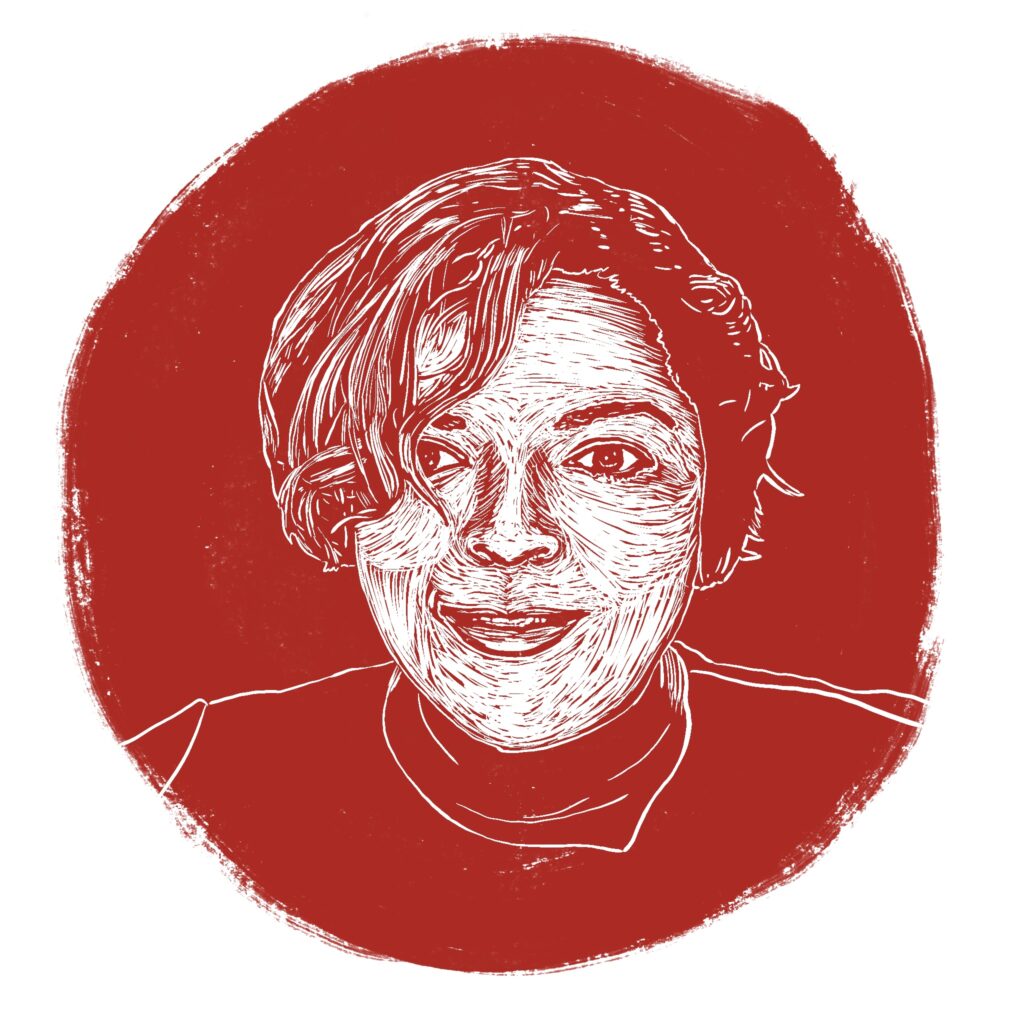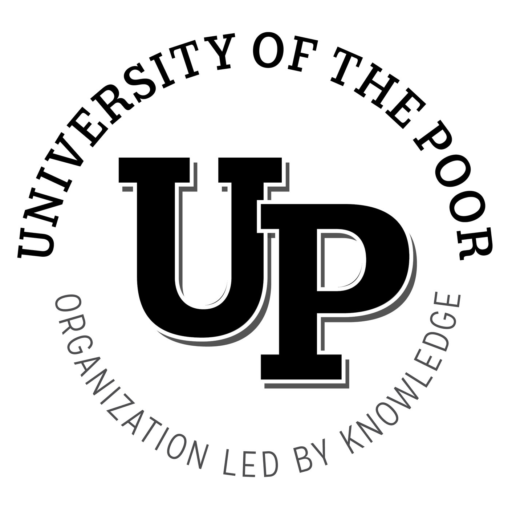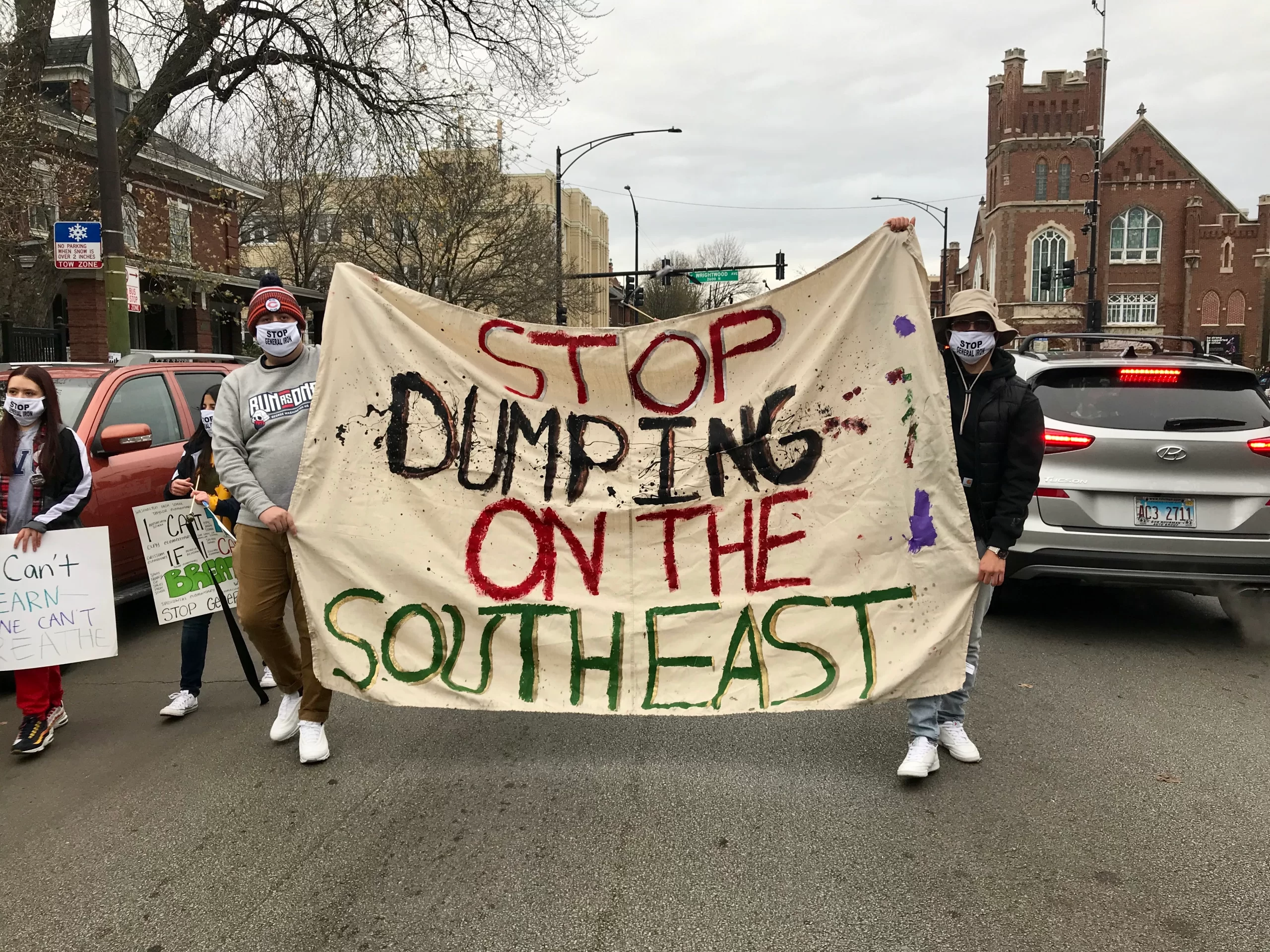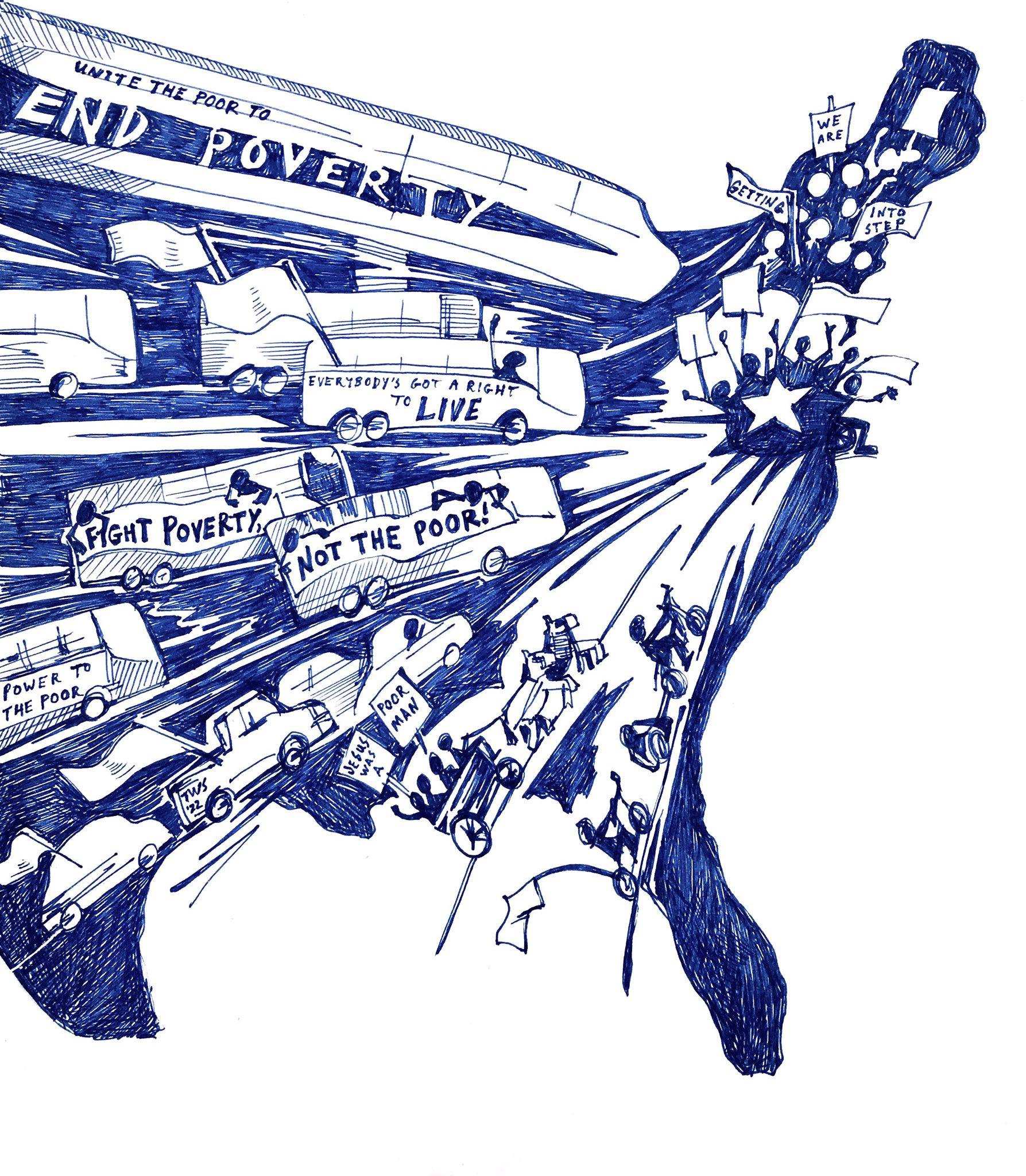Sheilah Garland-Olaniran and Alicia Swords from the University of the Poor Journal interviewed Olga Bautista, the Executive Director of Southeast Environmental Task Force (SETF), life-long southeast side resident and a founder of the Chicago Southeast Side Coalition to Ban Petcoke, and the Coalition to Ban General Iron, Chicago, IL, on April 20, 2022.
In the past the southeast side of Chicago was home to the midwest steel industry and a vibrant hub of working class life. Today, with the industrial plants shuttered, the land and the air contaminated, the southeast side has become the epicenter of the continuing fight against attempts to make the neighborhood a dumping ground for toxic waste.
Sheilah: You’ve been at the forefront of environmental struggles on the Southeast side of Chicago for a decade, taking on these big polluters and winning. You must love your neighborhood. Can you tell us what it’s like there?
Olga: My neighborhood is situated on the southern shore of Lake Michigan. The east of our neighborhood is the shore of Wolf Lake. On the west, there’s the Calumet River, which branches from Lake Michigan. You would think these lovely bodies of water would be amenities, but our reality is a lot worse, because the industries in the neighborhood dominate both sides of the Calumet River so we don’t have access to it. There are four tow-bridges that are always making us late to church and school when enormous ships and barges come through. We also have lots of truck traffic, along with numerous warehouse facilities, and new ones coming soon. All of this activity creates so much pollution and disruption to our lives.
The steel mills that once provided union jobs and a decent living are gone, and instead there are lots of companies that handle bulk storage of raw materials. Our neighborhood sits on an international port. The Calumet River brings ships from the St. Lawrence River, connects to the Mississippi River, and then on into the Gulf of Mexico. It is an important logistic hub for industry across the world. Both ends of the river are connected to global trade. Our little neighborhood is right in the middle.
This beautiful piece of Chicago also is part of a State Park where you can hunt within the city limits! We have Eggers Grove Forest Preserve and the Burnham Greenway. We have Calumet Park, which is a great place to recreate. My daughter is a junior lifeguard there. There are natural areas that the Chicago Park district controls, like the Cook County Forest Preserve, which is home to immense biodiversity. We look at the river and see beautiful egrets that nest here, but the background is this tattered community, superfund site, dotted with warehouses and smokestacks.
I wanted to paint this picture so you can get an idea about just how beautiful this community is, apart from its legacy of pollution.
We also have an extraordinarily diverse community. People came from all over the world to work in the steel mills 60-70 years ago; from Poland, Italy, Sweden, Mexico, South and Central America. Thousands of Black people from the South were brought in to strike-break and so were the last hired. When the steel mills started to close down, people were left without jobs. What was once a bustling neighborhood with movie theaters and department stores was plunged into a catastrophic situation. The newspapers from back then reported that 600 workers died because of alcoholism, depression and suicide. People weren’t able to pay their mortgage so stress levels were very high. Mostly the white folks had better positions in the steel mills as managers and supervisors, so they were able to move across the country. Blacks and many Mexican and other Latinos did not have that security and were left to figure out how to survive.
Our neighborhood has had challenges, but also there’s so much beauty. People ask, “Well, if it’s so bad, why don’t you move?” To reduce this to just a matter of location where you could just move is awful. It doesn’t consider the roots we have in our community. My brother was in the military for many years. He came home, got married and has a family. He lives a block and a half away from me. I missed him when he was away in the military, and now he’s raising his family here. I don’t want to give that up.
Sheilah: Thank you for that! People don’t often talk about the beauty of the Southeast side. I remember you told me about the tremendous diversity of the people, too.
Olga: There’s a huge population that we refer to as Blaxican, that is, Black and Mexican. We would swap recipes. Black grandmas would ask how to make Spanish rice so their grandchildren would eat it. My first job was at the Prime Foods Store. Every day the whole conveyor belt would be full of collard greens. We’d be like, “how is everybody eating all these? I need to learn how to make these!” So a friend taught me how to make collard greens, and now my dad makes them all the time. It took so many bunches because they cooked down so much.
Sheilah: Now that you’ve given us this contextual backdrop, let’s talk about General Iron. This is the community’s most recent victory against big polluters. Talk about how the struggle developed, what was the context of the fight, and who were the key groups and opponents?
Olga: Three years ago, we were at a meeting with the Environmental Protection Agency (EPA) and the Department of Public Health. The CDC, the Illinois EPA, and our alderwoman, Susan Sadlowski Garza, were there. We were discussing the issue of manganese, which is a substance used to make steel harder. It is mined and then brought here and has been stored openly for many years. Manganese can’t be wet down to control the dust because it’ll impact how it works, so it was blowing around the neighborhood. It’s something we need as humans and it’s in some of our food, but when it’s in powdered form, it travels to the brain and gets deposited in the teeth, hair, and toenails. So we were really concerned, and we wanted to figure out what could be done.
So all these agencies were here to talk with us about it. Now we have better storage and ways to handle manganese due to all the activism here. We were at this meeting and our alderwoman pulled us aside and asked if we could meet after the meeting. She said she was being bullied by the Department of Planning and Development Commissioner Reifman about the proposed relocation of General Iron from Lincoln Park to the Southeast side.
The city started this industrial corridor modernization that happens every 20 or 30 years where decisions are made about whether to alter the zoning and land use designations in those 26 industrial corridors. [One is] the industrial corridor on the North Branch of the Chicago River, the Lincoln Park neighborhood, which was once a very industrial area. Now it is home of the Apple Store and Patagonia. It has a nice shopping area and million-dollar homes. It’s more wealthy, affluent and white. People had been organizing for some time because this huge metal shredding facility was located right smack in the middle of this neighborhood. And they were shredding vehicles, which is very dangerous if it’s done openly. There is auto fluff, like very dirty cotton candy, that floats off of the facility and into the community. Any given day, the community would see workers in hazmat suits picking up the auto fluff, which we learned is a carcinogen, that would get stuck in the bushes and the gutters.
The city had another plan for this North branch of the Chicago River. They recently invested, and this is not an exaggeration, $26 billion dollars through tax investment financing to a developer called Lincoln Yards and another development in the South Loop called The 78. This money is earmarked to redevelop the North Branch of the Chicago River in this wealthy neighborhood to create Lincoln Yards, a neighborhood with playgrounds, buildings, condos, parks, coffee shops and river walks. The plan was then to move that metal shredder to our neighborhood, to the southeast side where we already have a lot of polluting industries.
We started to organize because our alderwoman told us about it. A few months later, though, she stopped communicating with us. Through the Freedom of Information Act, we found emails where she essentially gave in to the pressures of the commissioner and became silent on the issue.
We went through every bureaucratic avenue that was available to us to submit comments, go to community meetings, to do all the things to have our concerns heard and taken seriously. It was very clear: the company, Mayor Lori Lightfoot, and our alderwoman had the exact same talking points. Every time they were asked about the issue, they would say, “what’s on the north side is not what’s coming into the south side.” Or, “It’s going to be a state-of-the-art facility.” Later, we found out that the metal shredder is actually not a state-of-the-art facility. Countries like Germany and Japan no longer use these types of shredders, because they do not control emissions and they cause harm.
There was a plan to make the metal shredding rules stronger, which we participated in. We had done the research, we had an amazing legal team that scoured municipalities from across the world about how to control emissions in these facilities. And those comments were disregarded.
We did everything we could to make sure that if there was no way to stop this company, at least we would have the rules in place to protect our community. And all the facts, data, and details we submitted were disregarded.
I think about communities across the United States that don’t have an organization like ours, with the attorneys we have, and how they are susceptible to urban planning and land use issues. Where the frontline communities have no organization, they are taken advantage of and are put in harm’s way.
So that’s what happened with this campaign. We kept hearing that “the company is not being relocated, it’s a merger.” The mayor, the company, and our alderwoman were essentially engaged in a gaslighting campaign that disregarded the expertise of the community organizers and the attorneys that work with them.
Sheilah: Can you talk more about the critical moments in your struggle?
Olga: In the winter of 2020 we hit a wall. We had gone to all the meetings, the decision was pending and the community group was made up of about 25 community leaders that represented a much larger base. The pandemic had really destabilized the community and the organizing. We were all involved in mutual aid efforts. A few members of the campaign decided to start a hunger strike to draw attention, because we were losing the campaign. After the holidays, Chuck Stark, Breanna Britacci and Oscar Sanchez began a hunger strike.
We had never done anything like this. We quickly organized support to make sure they had doctors and nurses to check on them. We purchased blood pressure machines and other equipment. A couple of days later, other people from the campaign joined the hunger strike. News spread very quickly. We held a press conference and demanded to meet with the mayor. Then more people started joining, and organizations across the city and across the country started one-day solidarity hunger strikes and sharing that information through social media. Because remember, this was a pandemic so we were not meeting in person before there was a vaccine available. It was a very dangerous time for everyone in the country and in the world. So these drastic measures were taken out of desperation.
The hunger strike lasted 30 days. Within those 30 days, there were articles in The Washington Post and The Guardian. The new EPA chief, Michael Reagan, was actually moved. A few months after the hunger strike ended, there was a lot of pressure and everywhere he went, he was being asked about the hunger strikers and the situation in Chicago. He sent a letter to the Chicago mayor and recommended that the city of Chicago do a health impact analysis or environmental impact study. The city obliged and suspended the permitting process, which had already been extended. The decision to permit General Iron was pending and could have happened at any moment.
In May 2021 the announcement came to delay the permitting for General Iron. In November, the process started again. The health assessment was wrapping up, and there was a report released about the findings. Then, in February 2022, the final permit General Iron needed to begin its operations on the southeast side was denied! RMG had moved the large metal shredder from the north side of Chicago to the southeast side. They had invested, they said, $80 million. They already had a pile of metal that would have gone into the machine the moment the permit was issued. And the permit was denied!
We learned through the City’s final report that the soil testing inspectors were harassed by the company. They weren’t able to finish because they were run off the property. They also discovered foundry sand that was being stored without a permit on the facility. The levels of lead in the soil were astronomical. Because it was an unpaved area with lots of trucks, any activity would have caused harm to the workers and the surrounding community. The company said they are going to fight the decision. They said they would take it to court to smear the city for preventing them from doing business here.
Sheilah: That’s amazing. That victory of the permit denial in February 2022 really stood on the shoulders of a lot of intense organizing. Can you talk more about your strategy and how your tactics escalated?
Olga: The folks had called on Alderwoman Jeanette Taylor, a Councilwoman here in the city of Chicago, who herself was a hunger striker, to stop the closing of Dyett High School in 2015. She let us know it was gonna be really tough. There would be a lot of demands on the hunger strikers to do interviews, to protest, to do all these things. There was one woman who had non-stop headaches for two weeks. It was really difficult.
So all of these things were happening, and the community members and the hunger strikers wanted to push on and meet with Mayor Lori Lightfoot. They were determined not to stop the hunger strike until the permit was denied. But after so many failed attempts to meet with the mayor, and very little support from the Alderwoman here who never checked in on the hunger strikers, it was very apparent that the city would have let them die. Thirty days is a long time to not eat. One of them is actually still suffering effects from the hunger strike and may never recover from the damage to their body. We made the difficult decision that they were more valuable alive and organizing. Attention mushroomed with the media asking the hunger strikers to participate in protests and events. It was very tough to see so many people risk so much and our elected leaders pay them no attention. It was heartbreaking.
Sheilah: I remember the city never came to even check on the hunger strikers. Could you talk about how the hunger strike was received in the community? What kind of galvanizing took place as a result of folks going on hunger strike?
Olga: The demand was so high for the hunger strikers to stay involved and be part of panel discussions, protests, rallies, and speaking engagements. I think one of the reasons why the city ultimately denied the permit was because this pain was everywhere. Sometimes at unrelated events, reporters would ask the mayor about the hunger strikers and General Iron. It was galvanizing the city, and all the organizations that work on environmental and climate issues were meeting on a weekly basis to get updates, check in, and help raise money for the hunger strikers. It really was on the minds and hearts of this entire city. And it was impossible for the mayor to do anything without being questioned about this issue. The organizing was relentless.
Those were very critical moments that added to the community’s resolve, not just on the south side. You could hardly talk to anyone in any kind of organizing space who was not organizing for our fight.
Sheilah: What can other organizations learn from your struggle and victory? And what do you see in terms of future connectivity?
Olga: We had many members of the stop General Iron campaign who were not just in this to stop General Iron, but had a history of working on other social justice issues across the neighborhood and across the city of Chicago. There were also a lot of young people from George Washington High School, students and teachers, which is right across the street from where General Iron wanted to operate. It was the middle of the pandemic, and these young people had not even met their teachers. They didn’t even know their classmates. School had been virtual for a year. The students had been connecting to the uprisings after the murder of George Floyd, and they said police presence in their school did nothing to protect them. So they organized a campaign to remove police from their school, and they were victorious!
Then they said, what’s next? That was when they found out that General Iron was seeking to operate right next to their high school. The government officials who were supposed to protect us from this pollution were also not protecting them and us. So they saw it as their fight to protect the community. Joining the General Iron campaign was one way to connect these issues.
The same people who were fighting General Iron were also part of mutual aid efforts to support our community that was hit so hard by the pandemic. So all these things that before would have torn us apart actually made us stronger, made us unite even more, made us create opportunities to get to know each other better, to know what our challenges were, where we needed to be able to stay organized. Sometimes it meant paying somebody’s rent or sending groceries to somebody.
The young people had so much fire in them, even when we adults were ready to give up. The best thing we did was to get out of their way. These young people said, “we want to lead,” and then they told us what to do. They told us we needed to march on Lori Lightfoot’s and Alderwoman Sadlowski Garza’s houses. We supported their decisions and gave them everything they needed to make sure they were successful and safe.
I think this is one thing movement leaders across the country could be doing better: let folks do the thing they feel in their heart is what they need to do. If it doesn’t work, it still works, right? Because we learn about different tactics and when the right timing is right for things. We have to fight many battles to win the war. That is how I see growing this movement by not only philosophizing about these different issues, but actually putting strategies into action and getting out into the communities, the way that the Poor People’s Campaign: A National Call for a Moral Revival, has been able to do across the country. Environmental justice organizations, immigrant rights groups, and recent unionizing efforts, such as warehouse facilities like Amazon and Starbucks coffee shops – we need to connect these issues because it will be everyday people who are the ones bearing the brunt of this economic system.
Since I’ve been involved for the last 10 years, people often ask, “you won the Petcoke fight or Manganese or Coal Gasification plant, and recently, General Iron, how do you feel?” My response is always, it’s a little bittersweet, right? We have rules that will make it better from this moment forward, like now there’s no storage of petcoke outdoors or manganese. But nothing is done for the folks that for generations were exposed to pollution from these companies.
That’s why I feel like we’re barely holding the front right now. We’re not winning, we’re barely mitigating the effects of the polluting companies with fugitive dust and contamination of the soil and the water. There is a lot more work to be done, but I’m in awe of the way that the community has been able to stand up for themselves, and take the city to task on these new rules.
We have the solutions. We know what we need. People must be given the space to organize or perhaps just take it from the folks who are not giving us that space.

Olga Bautista, is the Executive Director of Southeast Environmental Task Force (SETF), life-long southeast side resident and a founder of the Chicago Southeast Side Coalition to Ban Petcoke, and the Coalition to Ban General Iron.


